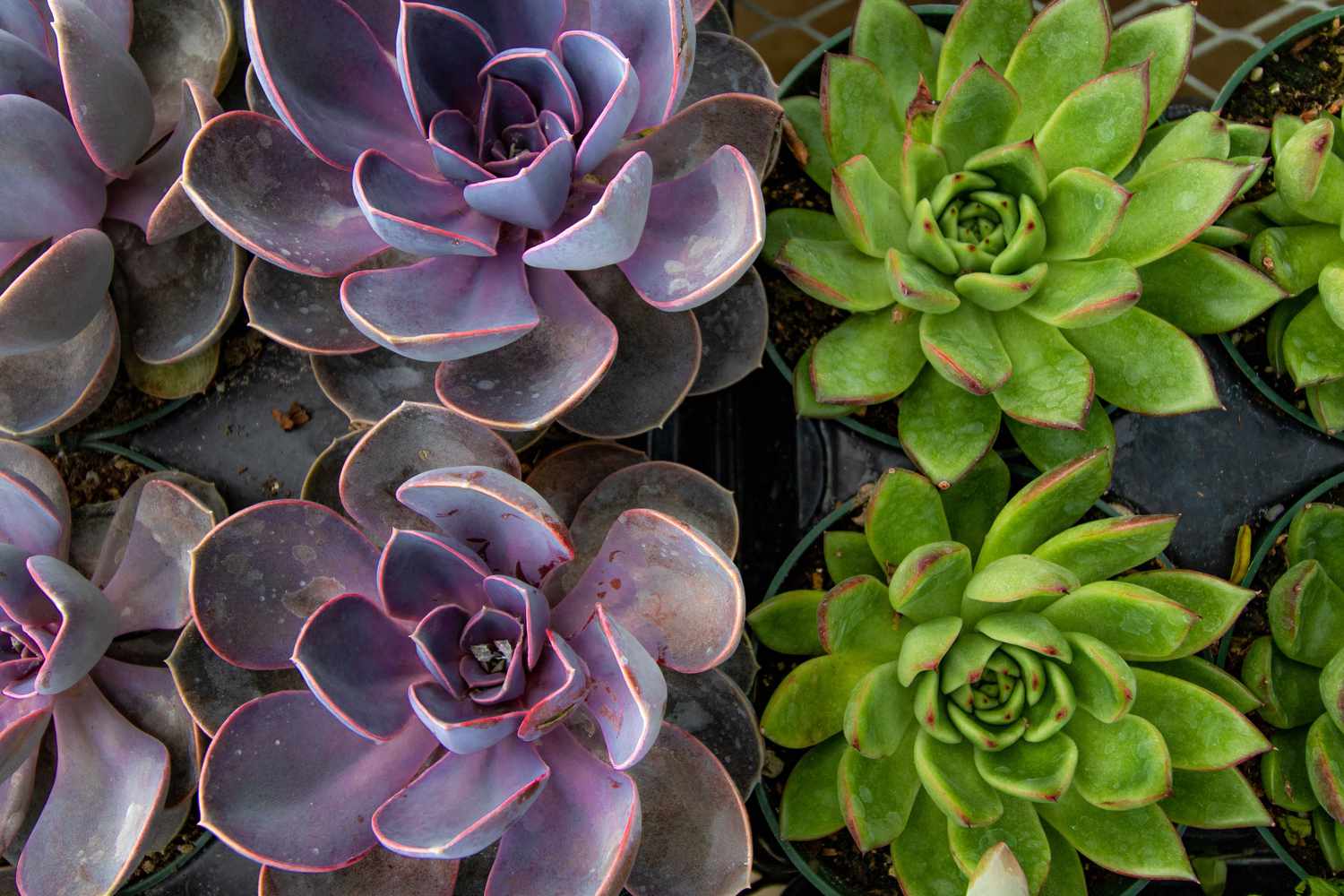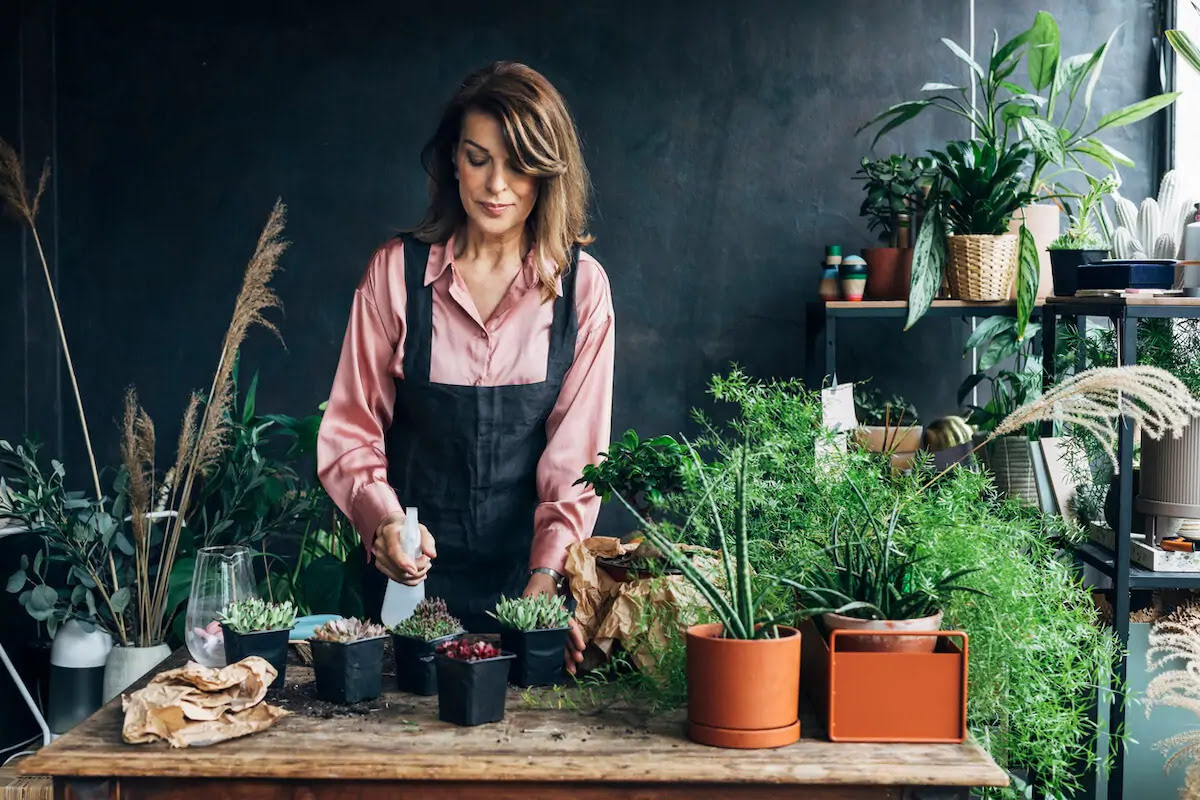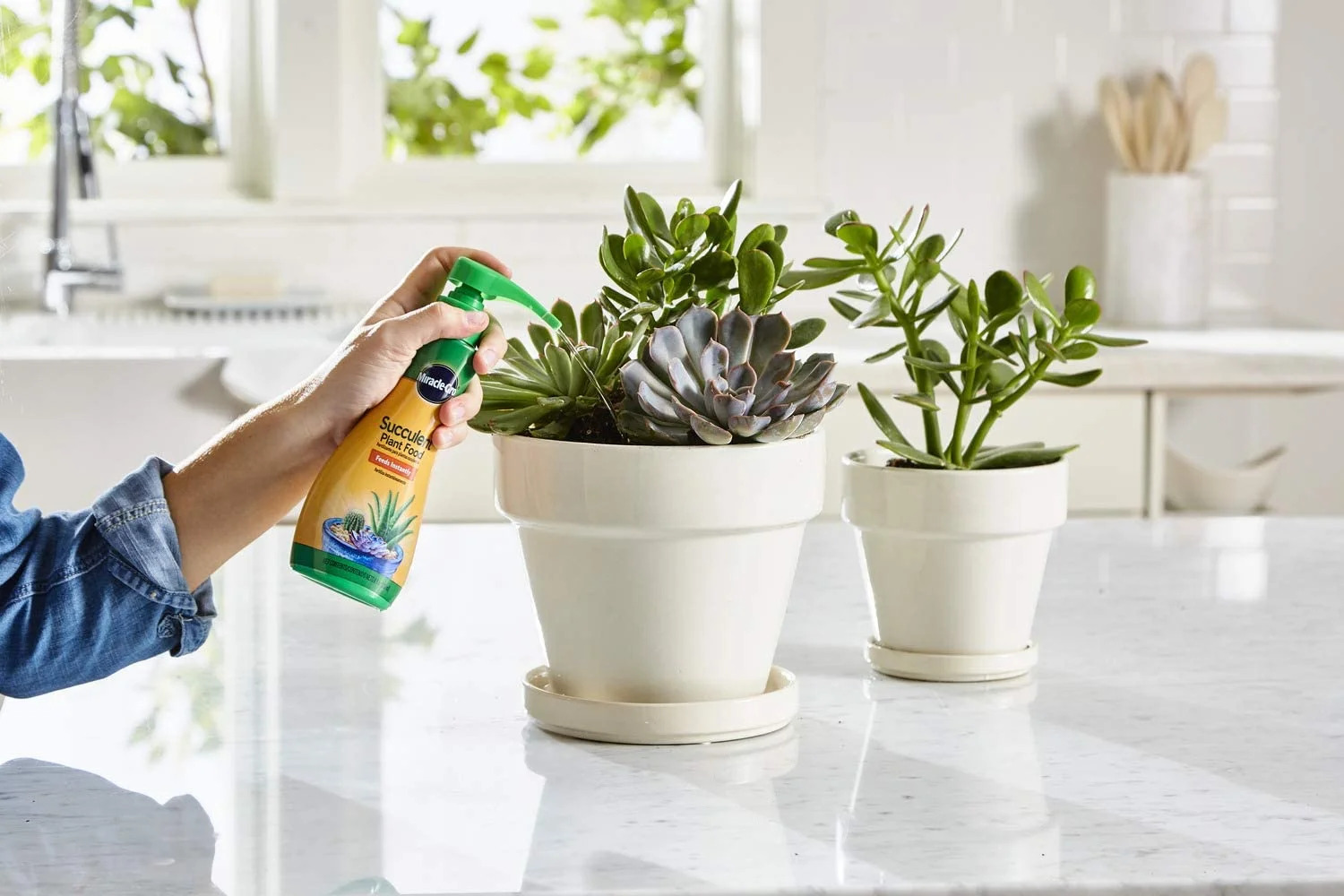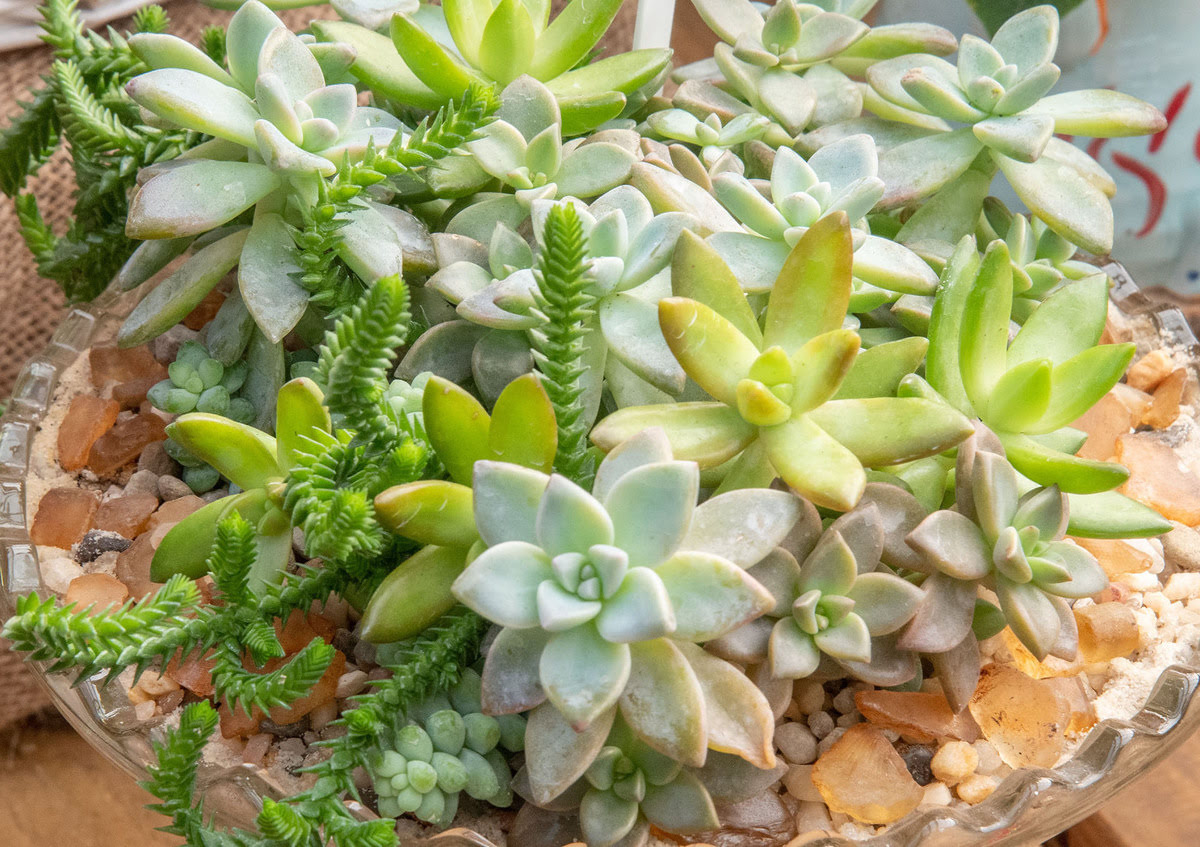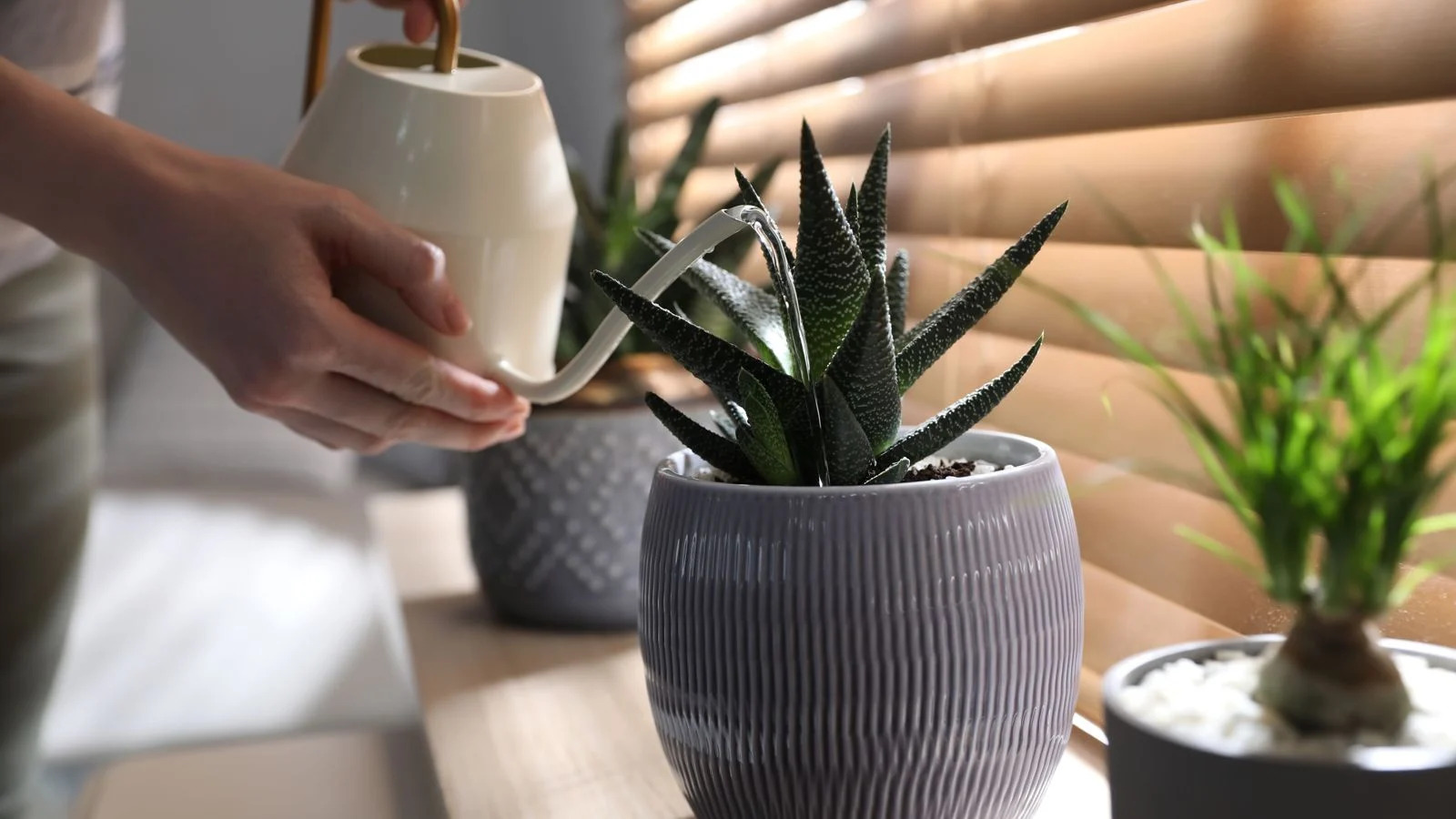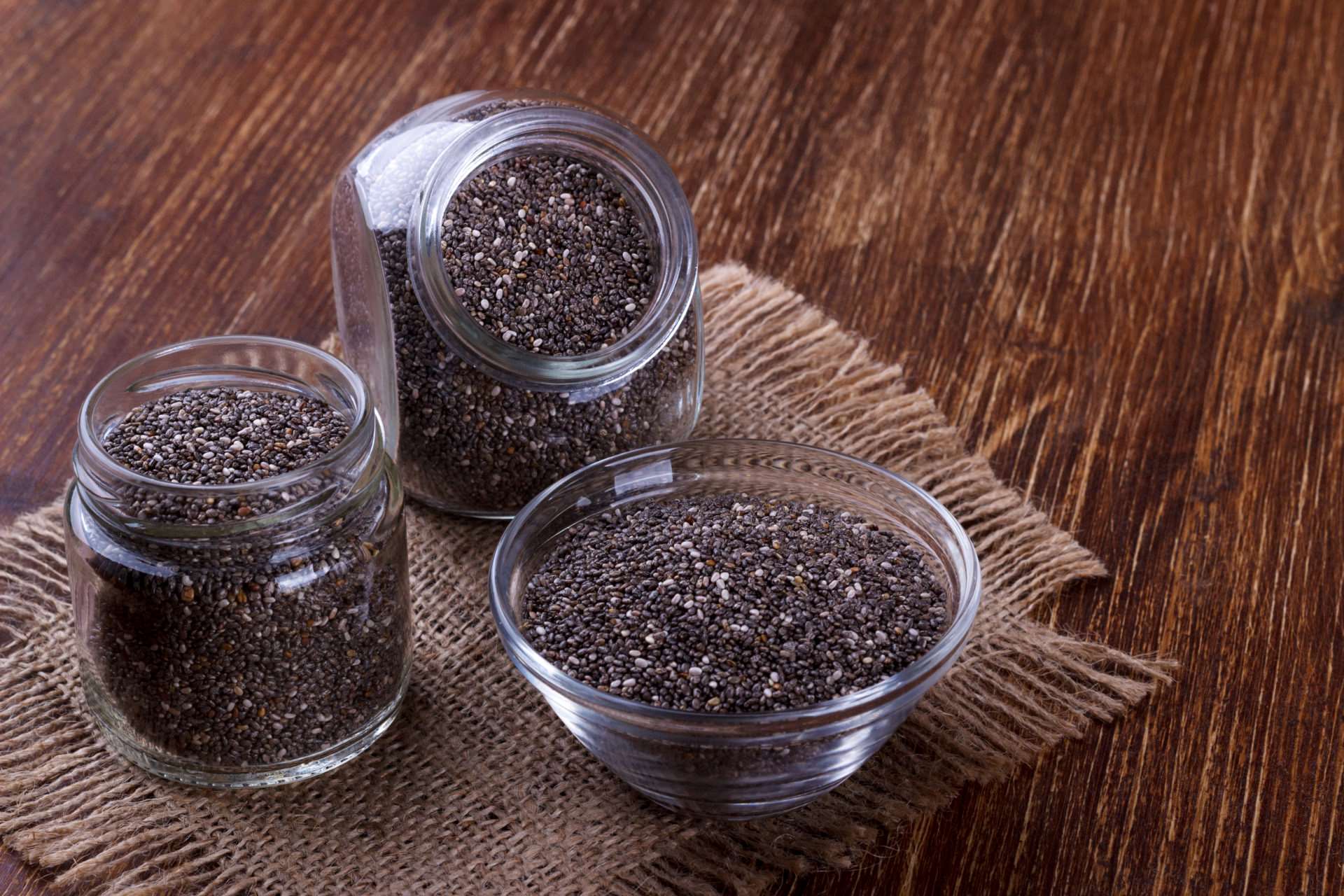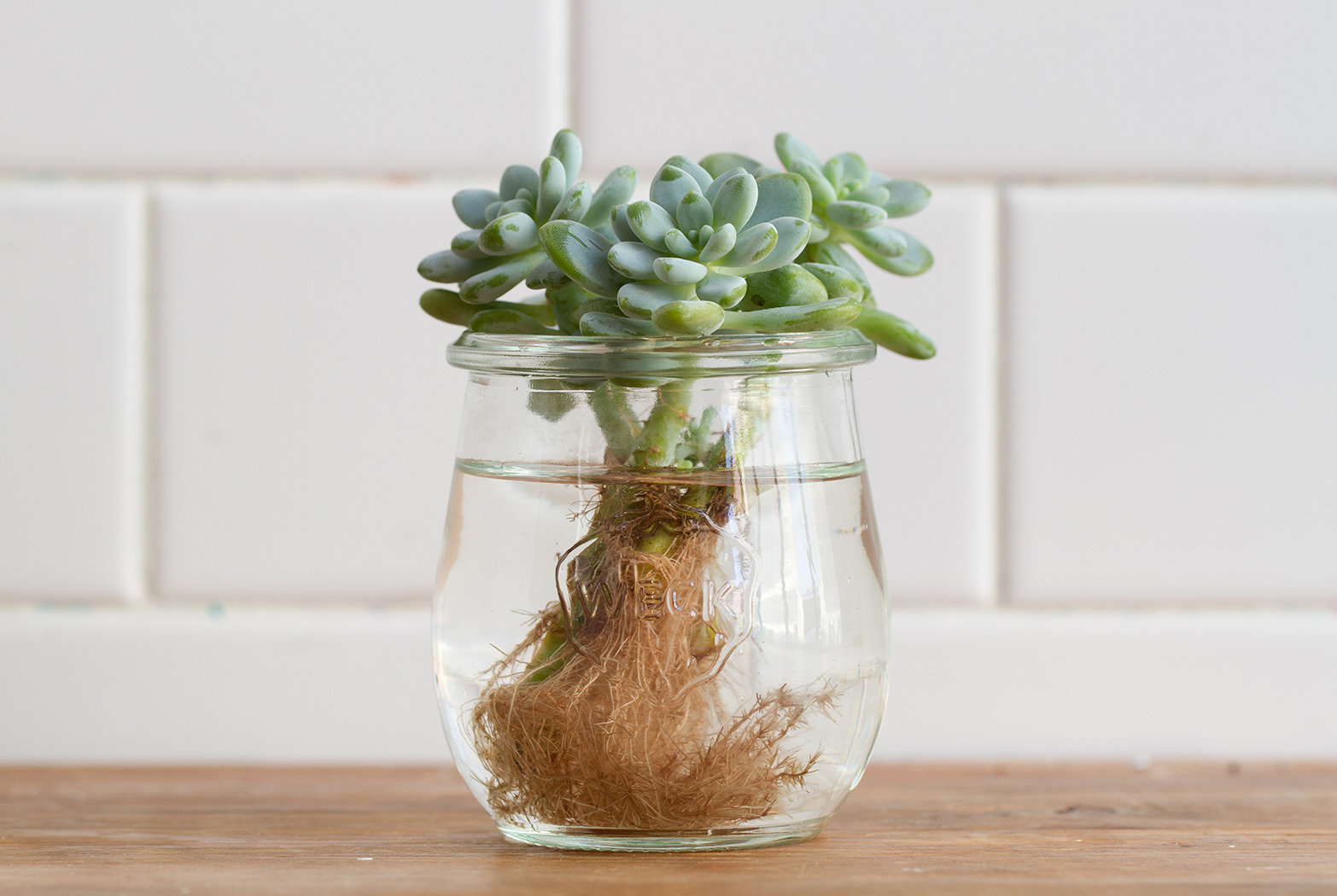Home>Gardening Techniques>Plant Care>How Long Do You Bottom Water Succulents
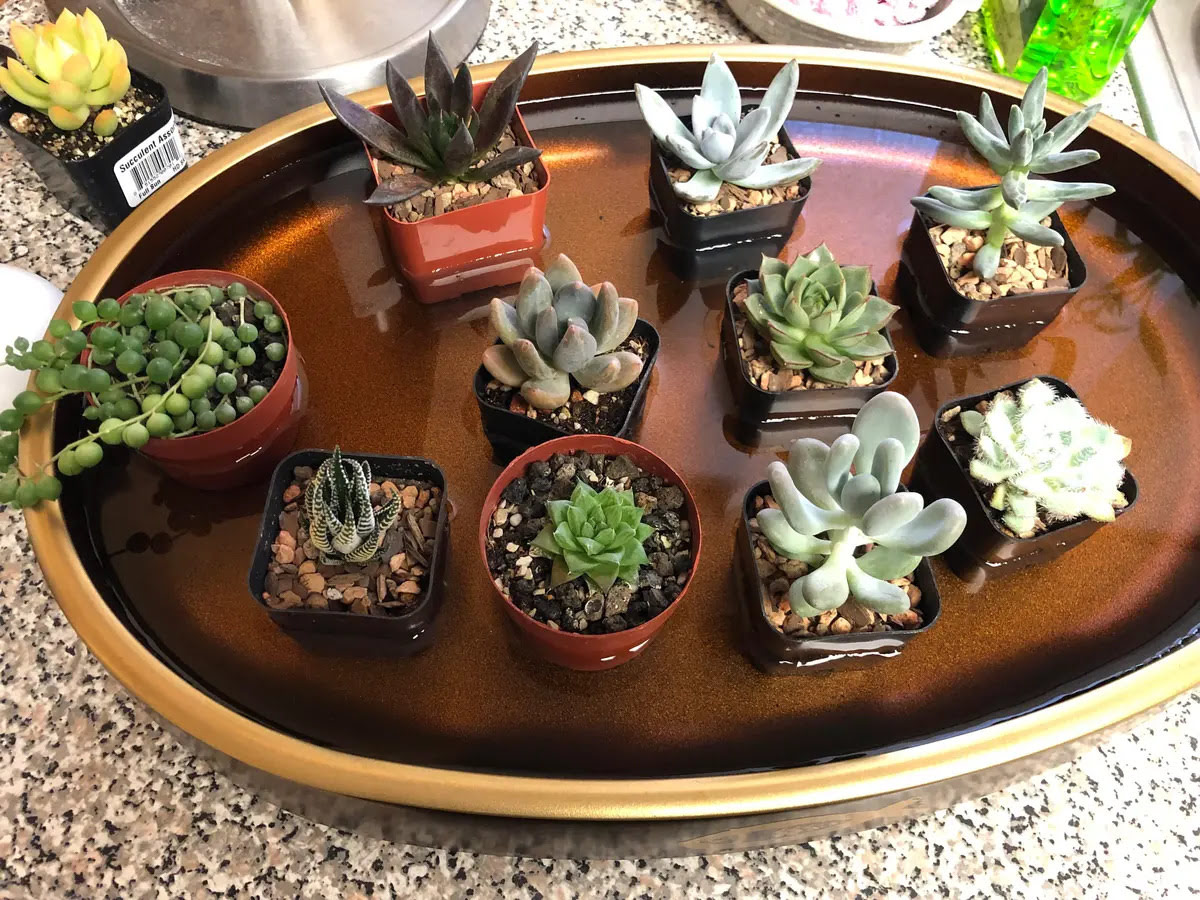

Plant Care
How Long Do You Bottom Water Succulents
Modified: January 22, 2024
Learn how to properly care for your succulents by bottom watering. Find out the ideal duration and frequency for bottom watering succulents.
(Many of the links in this article redirect to a specific reviewed product. Your purchase of these products through affiliate links helps to generate commission for Chicagolandgardening.com, at no extra cost. Learn more)
Table of Contents
Introduction
Welcome to the fascinating world of succulent plants! Succulents have gained immense popularity due to their unique shapes, vibrant colors, and low maintenance requirements. Whether you’re a seasoned plant enthusiast or just starting your journey as a plant parent, understanding proper watering techniques is crucial for the health and longevity of your succulents.
When it comes to watering succulents, there are different methods to choose from. One popular and effective technique is bottom watering. In this article, we will explore the concept of bottom watering for succulents and how it can benefit your plants.
Bottom watering involves providing water to the roots of plants from the bottom rather than pouring it directly onto the soil surface. This method mimics the natural way succulents receive water in their native habitats, where the soil retains moisture for an extended period.
While other watering methods, such as top watering, can lead to overwatering or uneven distribution of water, bottom watering allows the plants to take up water at their own pace. This method provides several advantages for succulents, making it a popular choice among plant enthusiasts.
Are you ready to delve into the world of bottom watering and discover the benefits it offers for your succulents? Let’s explore how bottom watering works and the recommended duration for this watering technique.
What is bottom watering?
Bottom watering is a watering technique that involves providing water to plants from the bottom rather than pouring it directly onto the soil surface. This method allows the plant roots to absorb water gradually and ensures thorough hydration without the risk of overwatering.
The process of bottom watering is simple. Place your potted succulents in a tray or saucer filled with water. The water will be drawn up through the drainage holes at the bottom of the pot, saturating the soil from below. As the plant absorbs the water it needs, it will take up moisture through the roots, promoting healthy growth.
One of the key benefits of bottom watering is that it encourages the development of robust and healthy root systems. When water is applied from the top, it often results in water pooling on the soil surface, leading to shallow root growth and vulnerability to root rot. However, with bottom watering, the roots have to actively seek out the water, stimulating their growth and increasing their capacity to absorb nutrients.
Furthermore, bottom watering prevents the accumulation of mineral salts and fertilizer residues on the soil surface. When water evaporates from the top, these substances are left behind, causing build-up that can be harmful to succulents. Bottom watering allows the water to rise from below and flush out any excess salts or residues, promoting a cleaner and healthier growing environment.
This watering technique is particularly beneficial for succulents because it imitates their natural habitat conditions. Succulents are adapted to arid climates where water is scarce, and the soil retains moisture for extended periods. By bottom watering, you are recreating these conditions, ensuring optimal hydration while minimizing the risk of overwatering.
Now that you understand what bottom watering is and why it is beneficial for succulents, let’s delve into how it works and the recommended duration for this watering technique.
Why bottom water succulents?
Bottom watering is particularly advantageous for succulents due to their unique growth patterns and water storage capabilities. Here are a few reasons why bottom watering is a preferred method for succulent care:
1. Prevents overwatering: Succulents are adapted to dry environments and are incredibly efficient at storing water in their leaves and stems. However, they are also susceptible to overwatering, which can lead to root rot and other health issues. Bottom watering allows the succulents to absorb the water they need at their own pace, preventing excess moisture buildup and reducing the risk of overwatering.
2. Promotes healthier root growth: Succulents thrive when they have a strong and extensive root system. Bottom watering encourages the development of deep and robust roots by forcing the plant to search for water. This leads to a more stable and resilient plant that can better withstand drought conditions.
3. Reduces the risk of pests and diseases: Overwatering can create a damp and stagnant environment, attracting pests like gnats and fostering the growth of fungal diseases. Bottom watering minimizes the excess moisture in the soil, making it less favorable for pests and pathogens to thrive.
4. Prevents mineral build-up: Watering from the top can result in minerals and salts accumulating on the surface of the soil. This build-up not only affects the aesthetic appearance of the plant but can also interfere with nutrient absorption. Bottom watering helps flush out excess minerals and salts, promoting a healthier growing environment.
5. Allows for effective nutrient uptake: Bottom watering allows the water to reach all parts of the soil, ensuring nutrients are evenly distributed. This helps the roots access essential minerals and nutrients necessary for the succulent’s overall growth and well-being.
6. Minimizes the risk of leaf rot: Succulents have leaves designed to retain water, but excessive moisture on the leaves can lead to rot and damage. Bottom watering helps keep the water away from the leaves, reducing the risk of rot and preserving the plant’s overall health and appearance.
By choosing to bottom water your succulents, you are providing them with a watering technique that aligns with their unique needs and natural habitat. It promotes healthy growth, reduces the risk of overwatering and root rot, and allows you to nurture vibrant and thriving succulents in your care.
How does bottom watering work?
Bottom watering involves providing water to plants from the bottom rather than pouring it directly onto the soil surface. This method allows the plant roots to absorb water gradually and ensures thorough hydration without the risk of overwatering. Let’s explore how bottom watering works in more detail:
1. Choose the right container: Use pots or containers with drainage holes at the bottom to allow excess water to escape. This is crucial for successful bottom watering as it prevents water from accumulating and causing root rot.
2. Prepare a water tray: Select a tray or saucer that is slightly larger than the plant’s pot. Fill it with water, ensuring that the water level is shallow enough that it doesn’t submerge the pot. Avoid using deep trays that can lead to waterlogging.
3. Place the pots in the water tray: Carefully place the pots of succulents into the water tray, ensuring that the drainage holes at the bottom are submerged in the water. The soil in the pots will gradually absorb the water through the holes.
4. Allow the plants to absorb water: Leave the pots in the water tray for approximately 20-30 minutes, or until you notice that the top layer of the soil appears moist. This allows the roots to take up water at their own pace.
5. Remove the pots from the water: Once the soil has received sufficient moisture, carefully remove the pots from the water tray. Allow any excess water to drain out before returning the pots to their usual location.
6. Monitor the soil moisture: After bottom watering, it’s important to monitor the moisture level of the soil. Succulents prefer well-draining soil, so ensure that the soil is mostly dry before repeating the bottom watering process. This will prevent the roots from sitting in overly wet conditions.
By bottom watering, you are providing your succulents with a method that closely mimics their natural watering conditions. This technique encourages the roots to actively seek out water, promoting healthy root growth and reducing the risk of overwatering. Remember to adjust your watering frequency based on the specific needs of your succulents and the surrounding environmental conditions.
How long to bottom water succulents?
The duration of bottom watering for succulents depends on several factors, including the size of the pot, the type of succulent, and the environmental conditions. Here are some guidelines to help determine how long to bottom water your succulents:
1. 20-30 minutes: As a general rule, it is recommended to bottom water succulents for 20-30 minutes. This timeframe allows the soil to absorb an adequate amount of water without risking overwatering. Keep in mind that different succulent varieties may have varying water needs, so adjust the duration slightly based on the specific requirements of your plants.
2. Observe the soil moisture: While the recommended time frame provides a starting point, it’s essential to pay attention to the soil’s moisture level. Check the top layer of the soil during bottom watering to see if it appears moist. Once the soil has absorbed enough water and appears adequately hydrated, you can remove the pots from the water tray.
3. Consider the pot size: The size of the pot also influences the duration of bottom watering. Smaller pots will typically require less time to soak up the water, while larger pots may need more time. Adjust the duration accordingly, ensuring that the soil is sufficiently moist at the end of the watering session.
4. Take environmental factors into account: Environmental conditions, such as temperature and humidity, can impact the water absorption rate of succulents. In warmer and drier climates, succulents may require slightly longer bottom watering sessions to ensure adequate hydration. Conversely, in cooler and more humid environments, shorter durations may be sufficient.
5. Observe the plant’s response: Ultimately, the best way to determine the ideal duration for bottom watering is to observe how your succulents respond. Plants that are well-hydrated and healthy will exhibit plump leaves and show signs of growth. On the other hand, if the succulents are showing signs of overwatering, such as droopy leaves or rotting roots, it may indicate that the duration of bottom watering should be shortened.
Remember that the goal of bottom watering is to provide gradual and even hydration to the roots of succulents. By striking the right balance between watering duration and the needs of your plants, you will ensure their optimal health and vitality. Regularly assess the moisture levels of the soil and adjust the duration accordingly to create a watering routine that best suits your succulents’ requirements.
Signs of overwatering in bottom-watered succulents
While bottom watering is a great technique for succulents, it’s still possible to overwater them if not done correctly. Overwatering can lead to root rot, yellowing or wilting leaves, and other signs of stress. Here are some common indicators that your bottom-watered succulents may be receiving too much water:
1. Yellow or transparent leaves: One of the most noticeable signs of overwatering in succulents is when their leaves turn yellow or become transparent. This discoloration may start at the base of the leaves and gradually spread throughout the plant. In healthy succulents, leaves should have a vibrant green color.
2. Soft and mushy stems: Overwatered succulents may develop soft and mushy stems. When you touch the stems, they may feel squishy or appear discolored. This is a clear indication that the plant is holding too much moisture, leading to rotting and potential damage to the root system.
3. Wrinkled and wilted leaves: While it may seem counterintuitive, overwatered succulents can display symptoms similar to those of underwatering. If the leaves appear wrinkled, soft, or withered, it could be a sign of excessive water uptake, which can cause the roots to weaken and ultimately lead to the death of the plant.
4. Sudden leaf drop: If you notice that your succulent is dropping leaves unexpectedly, it may be a result of overwatering. Excess moisture can cause the roots to become waterlogged, leading to root rot. As a defense mechanism, the plant may shed leaves to try to save its remaining healthy parts.
5. Soggy or foul-smelling soil: Overwatering can leave the soil consistently wet, making it difficult for the roots to receive enough oxygen. This can result in a foul smell emanating from the soil due to the growth of anaerobic bacteria. If the soil feels constantly damp and has a musty odor, it’s a sign that the succulent is receiving too much water.
6. Stunted or slow growth: Succulents that are overwatered may exhibit stunted or slow growth. The excess water can hinder the uptake of essential nutrients, leading to a lack of proper nourishment for the plant. As a result, the succulent’s growth may be compromised, and it may struggle to develop new leaves or stems.
If you notice any of these signs in your bottom-watered succulents, it’s essential to take immediate action to correct the watering routine. Allow the soil to dry out completely before the next watering session, and consider adjusting the watering frequency or duration to prevent further overwatering. Remember, it’s always easier to address the issue in its early stages rather than wait for the problem to escalate. With proper care and attention, your succulents can recover and thrive once again.
Tips for successful bottom watering
Bottom watering can be an effective and efficient way to water your succulents, promoting their overall health and growth. By following these tips, you can ensure successful bottom watering for your succulents:
1. Choose well-draining soil: Succulents thrive in well-draining soil that allows excess water to flow through easily. Use a succulent-specific or cactus mix that contains ingredients like perlite or pumice to enhance drainage and prevent waterlogging.
2. Use pots with drainage holes: Ensure your pots have drainage holes at the bottom to allow the excess water to escape. This prevents water from pooling in the bottom of the pot and helps prevent root rot.
3. Provide adequate water: While succulents are drought-tolerant, they still need a sufficient amount of water to thrive. Ensure that the water level in the tray is enough to reach the bottom of the pot’s drainage holes, allowing the roots to draw up the water without submerging the pot completely.
4. Monitor the watering frequency: The frequency of bottom watering will depend on factors such as the succulent type, pot size, and environmental conditions. Always assess the moisture level of the soil and allow it to dry out almost completely between waterings to prevent overwatering.
5. Adjust based on the season: During the active growing season, succulents may require more frequent bottom watering compared to the dormant season. Adjust your watering schedule accordingly, considering factors such as increased heat and evaporation rates.
6. Be cautious of humidity: If you live in a high-humidity area, be mindful of the moisture levels in the soil. Succulents in humid environments may require less frequent bottom watering to prevent excessive moisture retention in the soil.
7. Don’t leave pots sitting in water: Once your succulents have absorbed the required amount of water, remove the pots from the water tray. Allowing them to sit in stagnant water can lead to over-saturation and potential root rot.
8. Observe plant response: Pay attention to how your succulents respond to bottom watering. If they show signs of overwatering, such as yellowing leaves or soft stems, adjust the duration or frequency of bottom watering accordingly.
9. Consider the surrounding environment: Factors like temperature, air circulation, and sunlight exposure can affect the rate at which your succulents absorb water. Take these factors into account when determining the duration and frequency of bottom watering.
10. Regularly monitor and adjust: Succulents’ watering needs can change over time as they grow and adapt. Regularly assess the moisture levels, observe the plant’s response, and make adjustments to your bottom watering routine as needed.
Successfully bottom watering your succulents requires a balance of consistency, observation, and adjusting to their specific needs. With these tips in mind, you can provide your succulents with the right amount of water, ensuring their health and vibrancy in your care.
Conclusion
Bottom watering is a fantastic technique for keeping your succulents well-hydrated and thriving. By providing water to the roots from the bottom, you can prevent overwatering, promote healthy root growth, and create an environment that mimics their natural habitat conditions. Additionally, bottom watering helps prevent mineral build-up, reduces the risk of pests and diseases, and allows for effective nutrient uptake.
To successfully bottom water your succulents, choose well-draining soil and pots with drainage holes. Allow the soil to dry out almost completely between waterings and adjust the frequency based on factors like succulent type, pot size, and environmental conditions. Observe your plants’ response and make necessary adjustments to the watering routine. Remember to be cautious of overwatering, as signs such as yellowing leaves, soft stems, and leaf drop can indicate excessive moisture.
With proper care and attention, your succulents will thrive and bring beauty to your home or garden. Enjoy the journey of nurturing these fascinating plants, and experiment with different watering techniques to find what works best for your specific succulent varieties. By implementing bottom watering and following the tips provided, you can create an optimal watering routine and provide the ideal growing conditions for your beloved succulents. Happy gardening!
